The Intel Xeon W-2400 and W-3400 processors for workstations are now available, sporting up to 56 cores, eight channels of DDR5 memory, and 112 PCIe lanes. HP has announced new workstations to support them, along with NVIDIA’s new RTX A6000 Ada generation graphics card.
Intel Xeon W-2400 and W-3400 Lines Now Available
Intel’s long-anticipated update to its Xeon W-class workstation chips is here. There are two lines, the W-2400 and the W-3400, and they pair with the Intel W790 chipset for workstations.
The Xeons are based on Intel’s latest multi-tile architecture which uses Multi-die Interconnect Bridge (EMIB) technology to offer 56 cores in a single socket. The highest-end chips offer Turbo Boost frequencies up to 4.8GHz and 105MB of cache. The chips also naturally support Intel vPro and security features such as Intel Firmware Version Control to prevent reinstallation of older firmware. Advanced features through using the Intel XTU software include processor core tuning and AVX2, AVX512, and AMX negative ratio offset tuning.
The mainstream Xeon W-2400 line is divided into three levels: Xeon w3 (up to 8 cores), w5 (16 cores), and w7 (24 cores). All W-2400 chips support up to 2TB of quad-channel memory and 64 lanes of PCIe 5.0. The Xeon w5 and w7 levels are unlocked and support DDR5-4800 while the w3 line is not unlocked and is restricted to DDR5-4400.
Here are the available Xeon W-2400 SKUs. Notice the processor base power (PBP) scaling to 225 watts for the highest core count chips, the Xeon w7-2495X and the w7-2475X. Those chips can also boost to 4.8GHz.
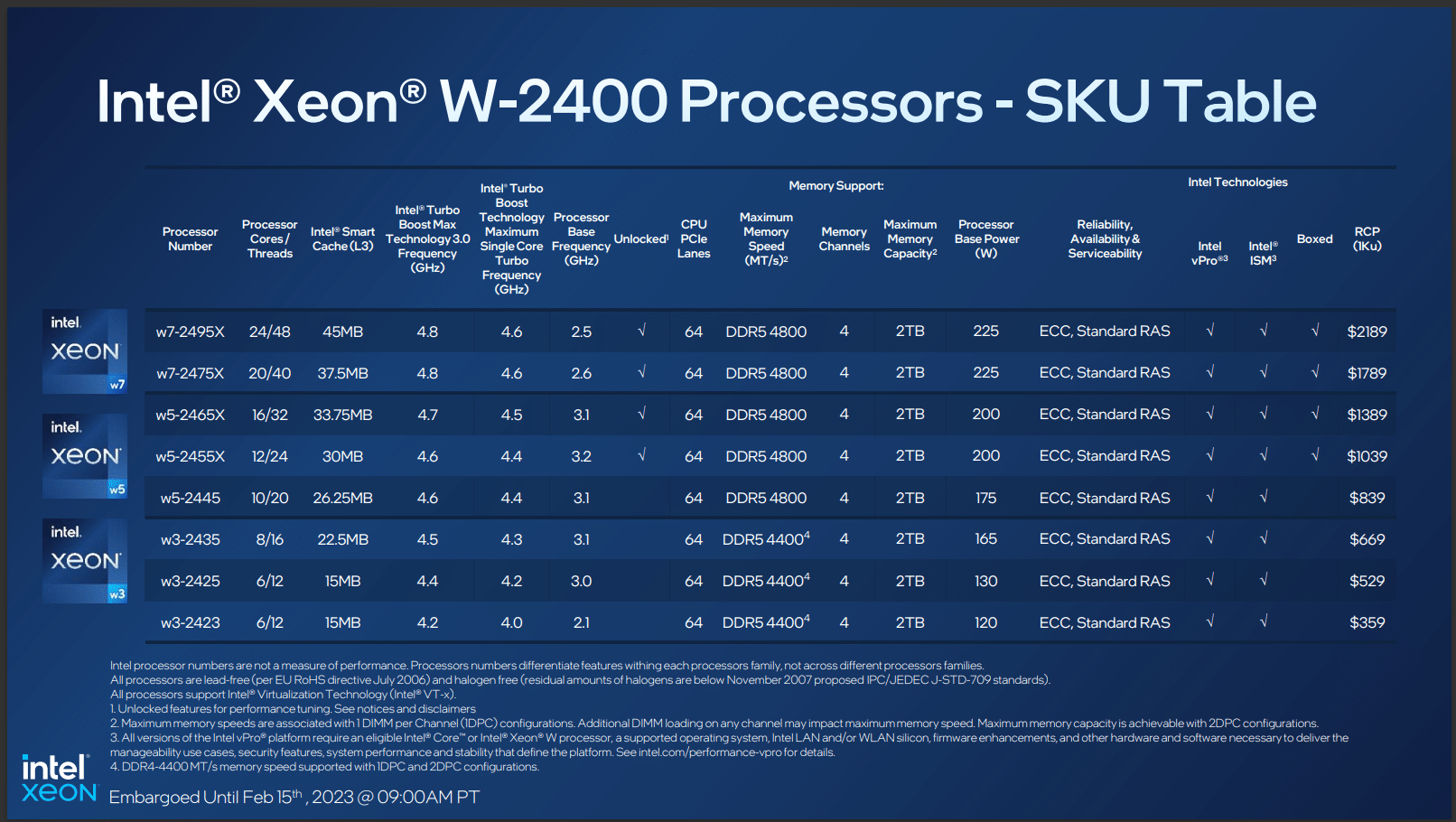
Next, we have what Intel calls the Expert platform, the Xeon W-3400 chips. These come in Xeon w5 (up to 16 cores), w7 (28 cores), and w9 (56 cores) levels. Next to the Xeon W-2400, the W-3400 line doubles the PCIe 5.0 lanes to 112, the memory channels to eight, and the memory ceiling to 4TB. Higher core counts also mean these chips have more cache and higher PBP ratings.
Here’s the Xeon W-3400 lineup. PBP numbers start at 270 watts and scale to 350 watts in the 56-core Xeon w9-3945X, so serious cooling will be the order of the day.
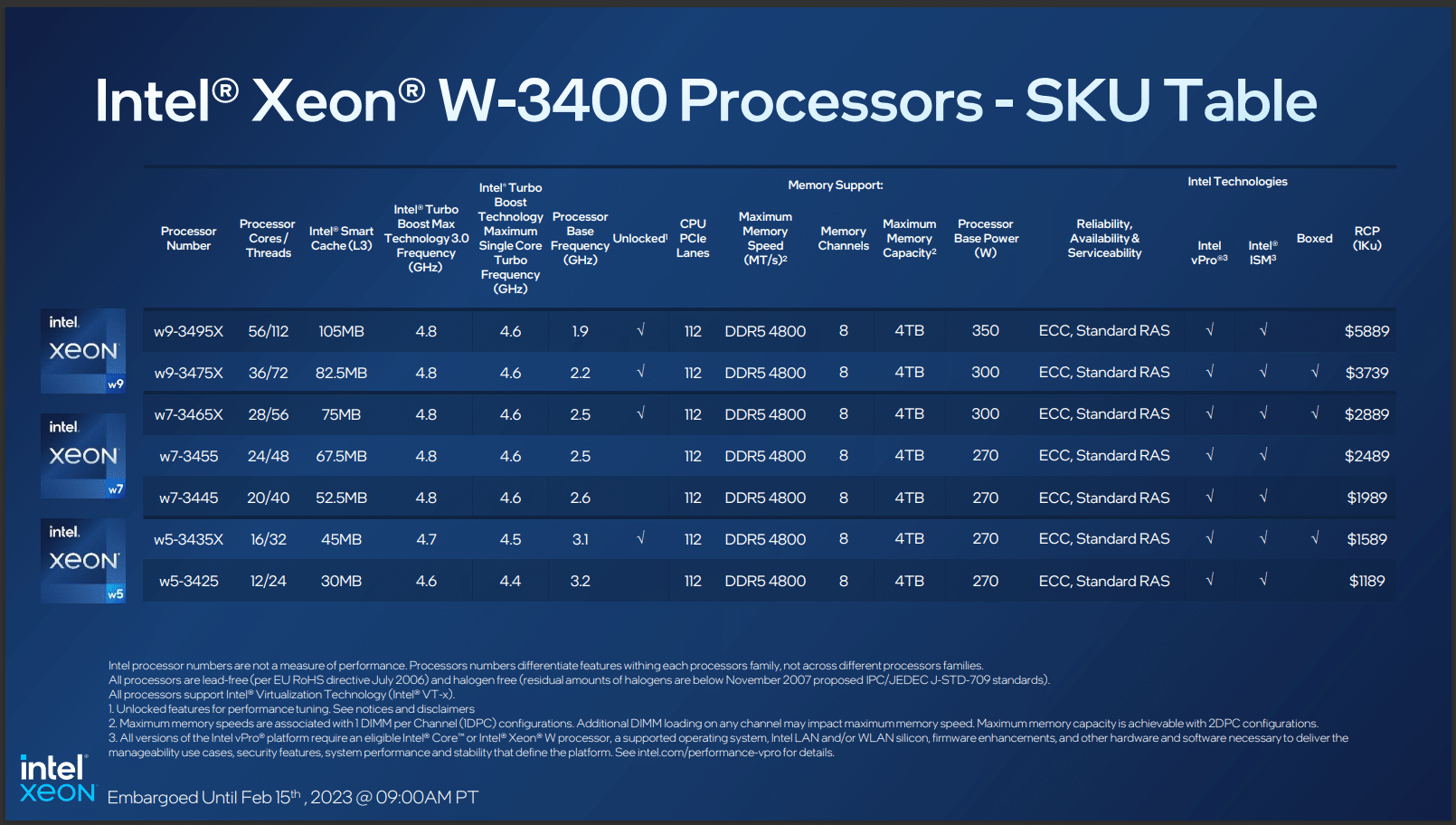
We don’t have performance numbers for the new Xeon W-class chips yet, but Intel’s slides show double-and triple-digit performance gains against previous-generation Xeon W-class chips and even Intel’s Xeon Gold server chips.
NVIDIA RTX Ada Generation GPUs
Alongside Intel’s Xeon announcement are NVIDIA’s RTX Ada generation professional graphics cards. Only specifications for the RTX A6000 have been announced. Based on the Ada Lovelace architecture also used in the GeForce RTX 4090, it features 142 third-generation RT cores, 568 fourth-generation Tensor cores, 18,176 CUDA cores, and 48GB of memory. NVIDIA claims up to double the ray-tracing, graphics, and compute performance versus the previous generation RTX A6000.
NVIDIA also announced its ConnectX-6 Dx SmartNICs with support for two 25Gbps ports and GPUDirect technology for up to ten times the GPU bandwidth versus a standard NIC.
New HP Z Workstations
HP’s latest Z workstations are now available with the latest Intel Xeon processors. All are ISV certified and covered by HP’s comprehensive hardware-based Wolf Pro Security.
The HP Z4 G5 is the mainstream model, supporting Xeon W-2400 processors from the w3 to the w7, up to 512GB of RAM, and GPUs through the Nvidia RTX A6000. Expansion slots include PCIe 5.0 x16, two PCIe 4.0 x16, and two PCIe 4.0 x4.
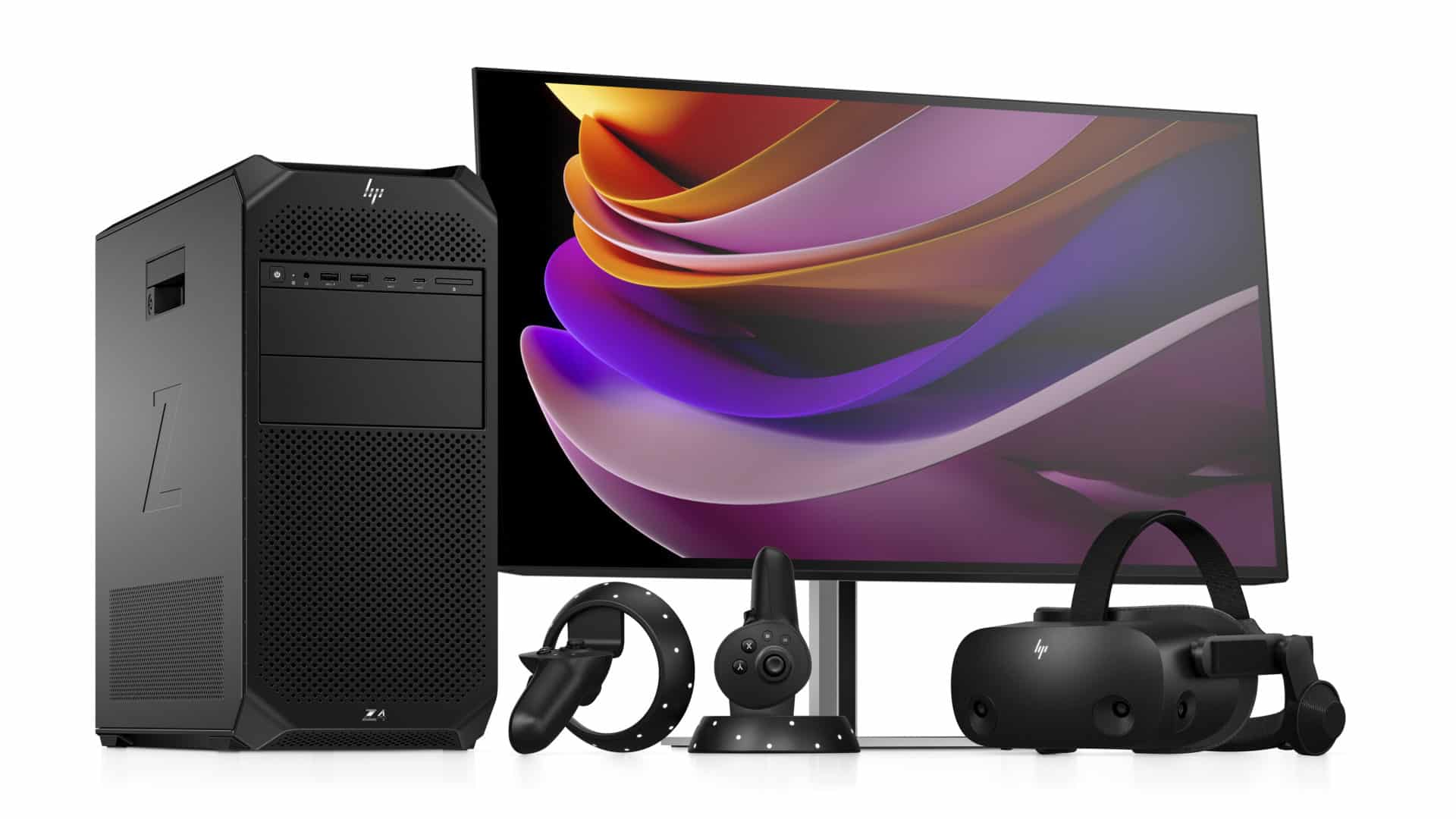
Next up the ladder is the HP Z6 G5, aimed at extreme graphics performance with support for three graphics cards. This tower is based on the Xeon W-3400 chips scaling to 56 cores. Memory tops out at 1TB and storage at 88TB. There are six PCIe slots (one 5.0 x16, two 4.0 x16, two 4.0 x4, and one 3.0 x16). Thunderbolt 4 connectivity is standard. Unique features include four front-accessible NVMe bays and toolless access. HP rates this tower for a three-year lifecycle.
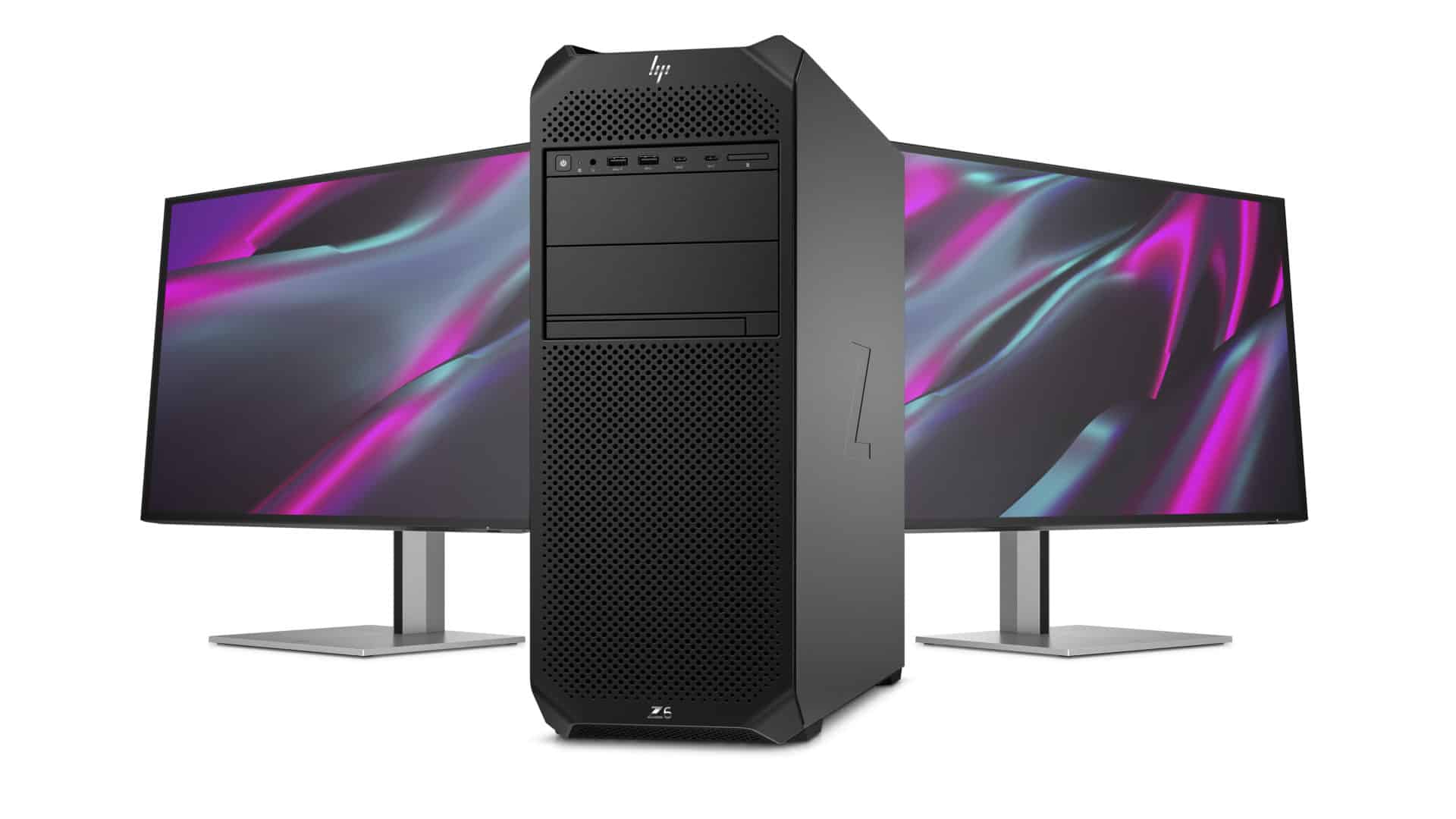
The top-level workstations are the HP Z8 G5 and the Z8 Fury G5. This is the most expandable Z workstation, featuring 7 PCIe slots. It supports two high-end graphics cards, 1TB of memory, 120TB of storage, two front-accessible NVMe bays, six internal M.2 slots, and four 3.5-inch bays. Like the Z6, the Z8 is also rated for a three-year lifecycle.
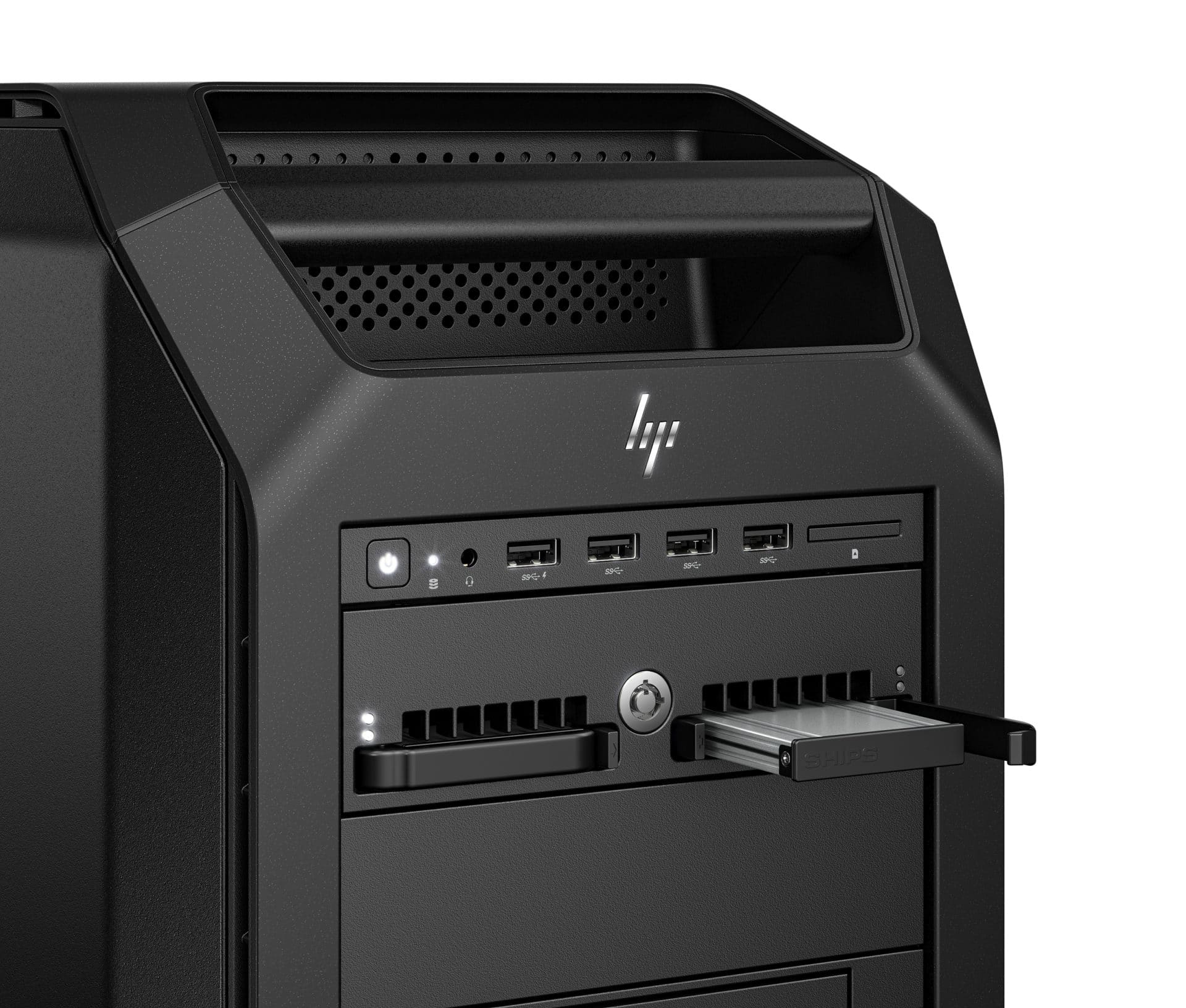
Unlike the Z6, the Z8 uses one or two Xeon Silver and Gold processors and the Intel C741 chipset. It has 16 memory DIMMs (eight per socket). Power supplies go up to 1,700 watts.
The HP Z8 Fury G5 differentiates itself from the Z8 G5 by supporting four high-end GPUs and using Intel Xeon W-3400 processors with the Intel W790 chipset. It also has 16 RDIMM slots for up to 1TB of RAM. Power supplies scale even higher, to 2,250 watts.
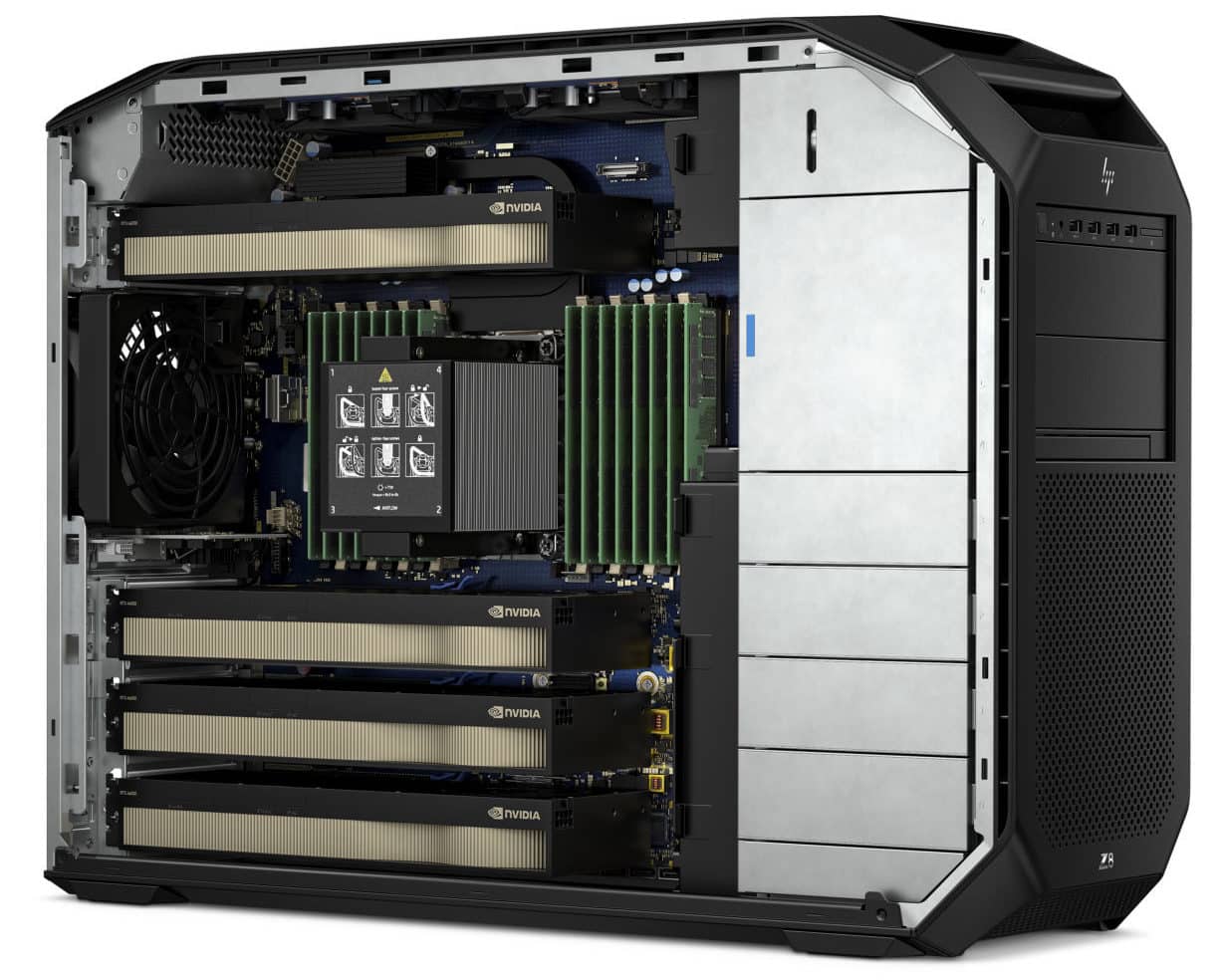
HP also announced its Anywhere Remote System Controller, which can be used to remotely manage any system, not just HP’s own. It’s essentially a universal KVM and supports power on and off. The controller is available as both a box and a PCIe card.
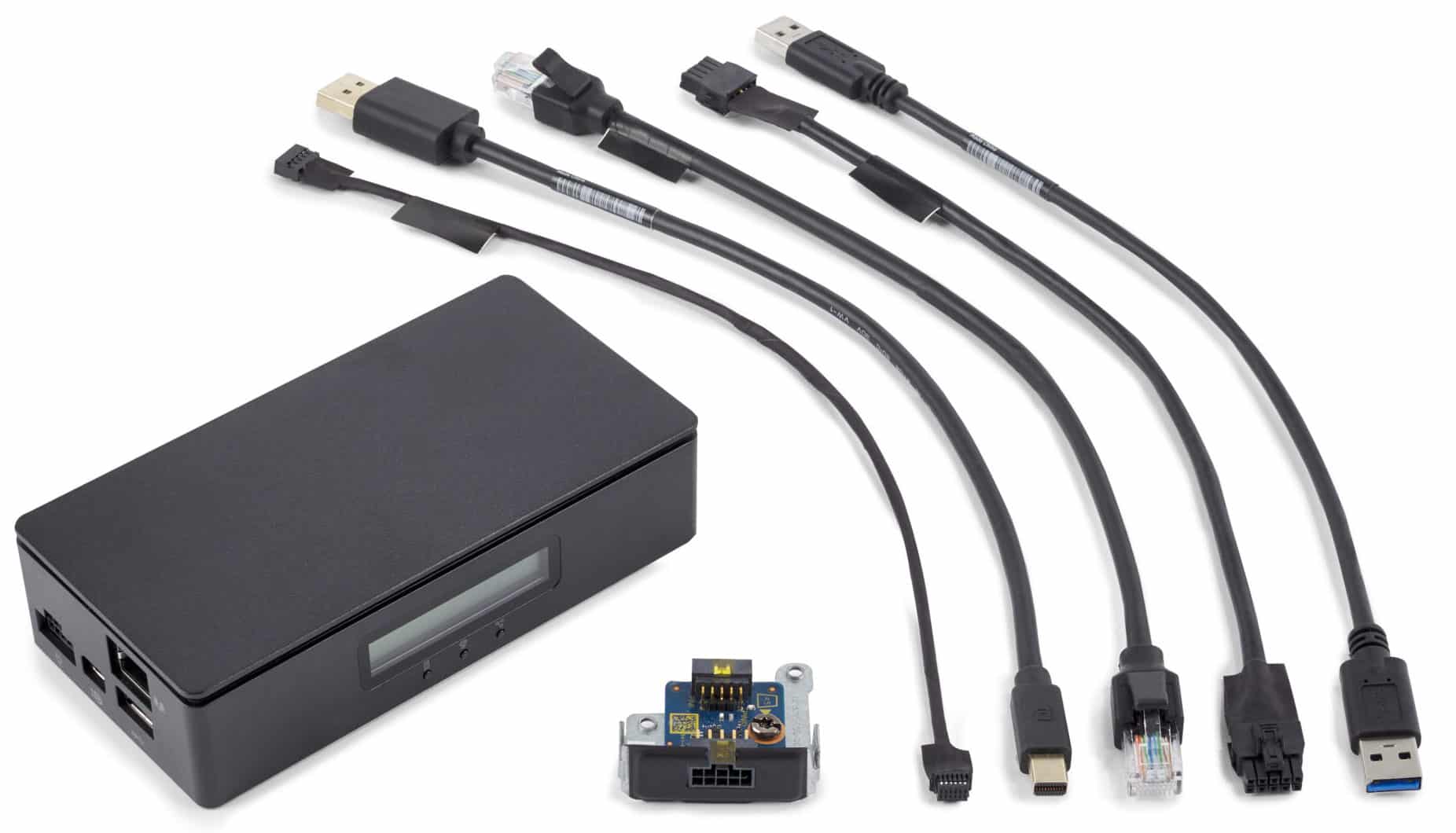
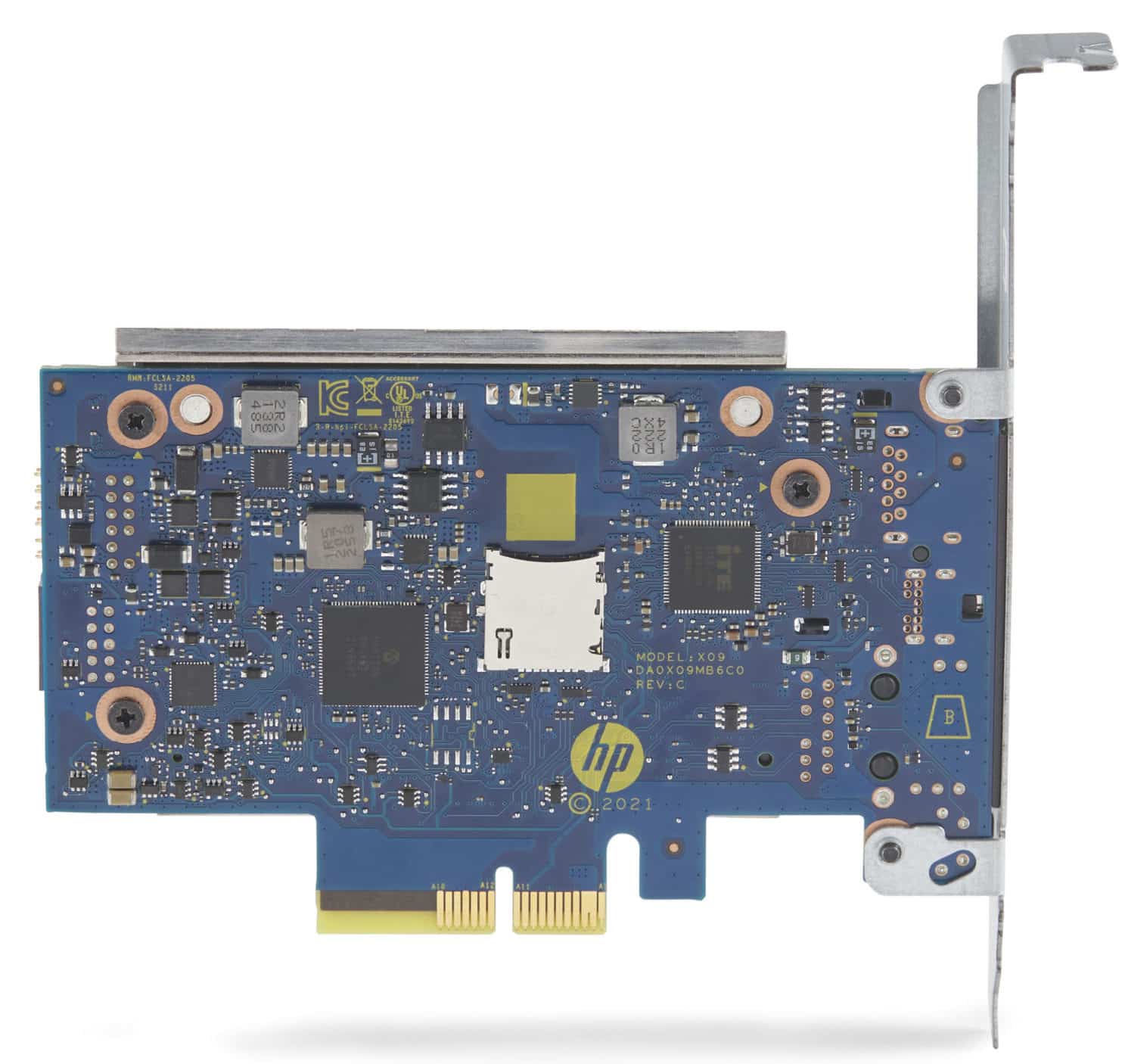
Availability
The Intel Xeon W-2400 and W-3400 chips, the NVIDA RTX Ada generation GPUs, and HP Z workstations are available starting February 15, 2023.




 Amazon
Amazon